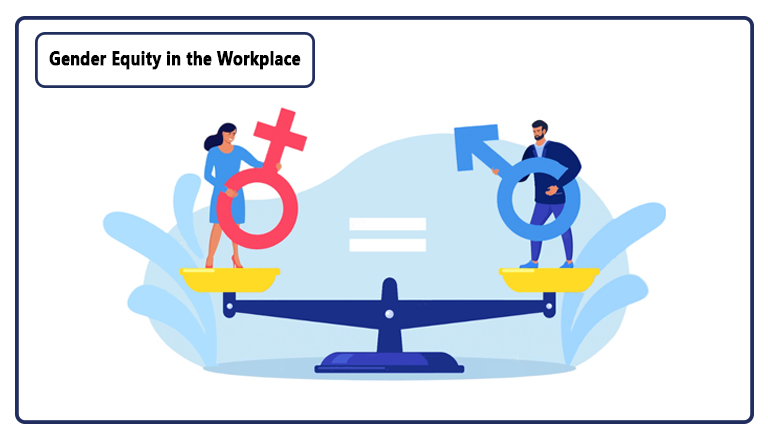In 2022, the World Economic Forum reported the Global Gender Gap Index to have reached 42.7%, the highest gender parity score ever. This means that more equity is taking place between men and women in professional, technical, and leadership roles. And as much as this score signals positive progress, there is still a long way to go before gender equity can be fully achieved. In fact, the Global Gender Gap Report of 2021 estimates that with the current rates of progress, it might take 135.6 years for the gender gap to close.
So, although great progress has been made, there is still a significant disparity and still much that can be done to bring about more gender equity in the workplace. In this article, we will help you get an insight into the current state of gender equity and what you can do to improve the stats in your organization.
The Top Manifestations of Gender Inequity
Gender inequity in the workplace manifests itself in many forms, infiltrating the entire employee lifecycle, starting from hiring and going all the way to assuming senior leadership roles.
A Clog at the Beginning of the Pipeline
In most workplaces, gender inequity starts at the beginning of the pipeline, with gender targeting being commonly practiced in job ads. According to a study by Ashoka University in 2021, approximately 4.5% of job ads have an explicit female preference while 3.8% have an explicit male preference, with job titles such as ‘telesales’ and ‘office executive’ occurring frequently in female-targeted jobs while titles such as ‘delivery boy’ and ‘sales executive’ commonly targeting men. These findings confirm that employers consciously prefer specific genders in specific roles and do not shy away from explicitly expressing these preferences. Such a practice negatively impacts gender equity in the workplace as it deepens existing occupational gender stereotypes at the beginning of the pipeline.
Furthermore, research shows that word choice in job ads can have a strong impact on perpetuating gender inequity at the beginning of the funnel. The research conducted by Havard Kennedy School shows that words such as ‘competitive’, ‘dominant’, or ‘leader’ invite more male candidates to apply to jobs, while words such as ‘support’, ‘understand’, and ‘interpersonal’ invite more female candidates. Unfortunately, including such gendered wording in job ads is still commonplace practice today.
Studies also show that mothers, and women of childbearing age, are less likely to receive a callback from hiring managers, even when their résumés are identical to the résumés of male applicants or childless women. All these factors signify a clog in entry-level positions that makes men and women start out on an uneven playing field.
The Broken Rung
What is more staggering is how less women get promoted from entry level roles to first-line management roles. Research by McKinsey shows that while women, in the United States alone, account for 48 percent of entry-level hires, they account only for 38 percent of first-level managers, shedding light on a broken rung in the pipeline to career advancement and senior leadership roles. Women need to work harder to be considered for their first managerial roles, compared to men, are set to higher standards, and often suffer the microaggressions of being mistaken for a junior or being considered not qualified.
The challenges women face to get an opportunity to gain access to their first managerial roles worsen as they move upwards, with research showing that as they move upwards, for every female director being promoted to the next level, two choose to leave their organizations after facing stronger headwinds than men derailing their promotions and some leave simply seeking more DEI-focused work cultures. Moreover, higher up the pipeline, the gender equity gap, further, worsens, with only 26% of C-Suite positions in the United States alone being held by women in 2022.
An Astounding Gender Pay Gap
Gender inequity reflects also in the difference between the pay of both men and women holding the same roles. Interestingly, the gap starts from entry-level positions, with women making 11% less than men on average for the same jobs, even though women negotiate for higher pay at about the same rates as men. As with career advancement opportunities, the gender pay gap further widens as women advance, with women earning on average 16% less than their male counterparts globally, although this percentage is significantly greater in many places.

Best Practices to Close the Gender Inequity Gap
Although the statistics may be discouraging, modern technologies and work arrangements offer a world of opportunities that can totally turn around the current stats. Here are some best practices that organizations can do to help close the gap.
1. Ensure Fair Hiring Practices
Ensure your hiring board is diverse and includes women. Having a woman share in the hiring decisions may help highlight instances of unconscious bias. Besides that, provide training to your hiring managers and HR employees on gendered job posts and gender-discriminating questions and bias in interviews. More importantly, follow hiring dashboards closely to watch out for any gender-related discrepancies and take necessary actions. Also, provide a way for candidates to voice their complaints to your organization in case they experience discrimination along the hiring process.
2. Provide Appropriate L&D Initiatives
Leveraging the learning and development arm of your organization can help greatly in closing the gap. Build women’s skills by providing them with special training programs designed to help them overcome the leadership challenges specific to them. Design mentorship programs to help junior female employees receive guidance from senior leaders. Also, provide training to all employees to raise awareness about gender-related issues, bias, and best practices to make sure employees from all genders can bring their best to work.
3. Provide Opportunities for Growth & Promotion
Follow closely your promotion data with its gender divisions, share it transparently with all employees, and highlight achievements and when changes need to be made. Ensure women are fairly considered for promotions and are not being disregarded on the premise of their caregiving responsibilities.
4. Create a Family-Friendly Working Environment
Research shows that flexibility is one of the top reasons women consider when selecting companies to work for. Providing remote work opportunities, flexible working hours, etc. are work arrangements that make it possible for care givers from all genders to strike a balance between their work and family responsibilities. Creating a daycare facility in the office or adding a daycare allowance to employees’ salaries with children under the age of five is one way to create a more family-friendly working environment.
5. Build an Equitable Payscale
Ensure that men and women are paid equally for the same jobs performed. Make sure the right checks are set for positions at all levels so that both genders are paid fairly even in entry level positions. It is not a change that can be done overnight, but publishing an organization-wide gender pay gap report regularly can help increase transparency, raise awareness, and encourage employees to speak up in case a pay adjustment is needed.
6. Remember It’s About Men Too
Gender equity in the workplace is not only about women; it’s about men too. Work towards giving men the same caregiving privileges that women get. Maternal leave has been commonplace for long, but some forward-looking organizations and countries have started to implement paternal leaves too to help men stay on top of their paternal responsibilities.
Build a Gender-Equitable Workplace
This is the current status of gender equity in the workplace and what you can do about it. If you’re interested in developing the leadership skillset of your female employees or raising organization-wide cultural awareness, you can check out our library of online courses here.

